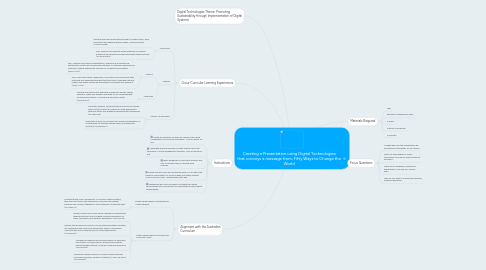
1. Alignment with the Australian Curriculum
1.1. Digital Technologies Knowledge and Understanding
1.1.1. Investigate the main components of common digital systems, their basic functions and interactions, and how such digital systems may connect together to form networks to transmit data (ACTDIK014)
1.2. Digital Technologies Processes and Production Skills
1.2.1. Design, modify and follow simple algorithms represented diagrammatically and in English involving sequences of steps, branching, and iteration (repetition) (ACTDIP019)
1.2.2. Explain how developed solutions and existing information systems are sustainable and meet local community needs, considering opportunities and consequences for future applications (ACTDIP021)
1.2.3. Manage the creation and communication of ideas and information including online collaborative projects, applying agreed ethical, social and technical protocols (ACTDIP022)
1.2.4. Implement digital solutions as simple visual programs involving branching, iteration (repetition), and user input (ACTDIP020)
2. Digital Technologies Theme: Promoting Sustainability through Implementation of Digital Systems
3. Cross-Curricular Learning Experiences
3.1. Media Arts
3.1.1. Develop skills with media technologies to shape space, time, movement and lighting within images, sounds and text (ACAMAM063)
3.1.2. Plan, produce and present media artworks for specific audiences and purposes using responsible media practice (ACAMAM064)
3.2. English
3.2.1. Literacy
3.2.1.1. Plan, rehearse and deliver presentations, selecting and sequencing appropriate content and multimodal elements for defined audiences and purposes, making appropriate choices for modality and emphasis (ACELY1710)
3.2.1.2. Plan, draft and publish imaginative, informative and persuasive texts, choosing and experimenting with text structures, language features, images and digital resources appropriate to purpose and audience (ACELY1714)
3.2.2. Language
3.2.2.1. Identify and explain how analytical images like figures, tables, diagrams, maps and graphs contribute to our understanding of verbal information in factual and persuasive texts (ACELA1524)
3.3. Design Technologies
3.3.1. Generate, develop, communicate and document design ideas and processes for audiences using appropriate technical terms and graphical representation techniques (ACTDEP025)
3.3.2. Negotiate criteria for success that include consideration of sustainability to evaluate design ideas, processes and solutions (ACTDEP027)
